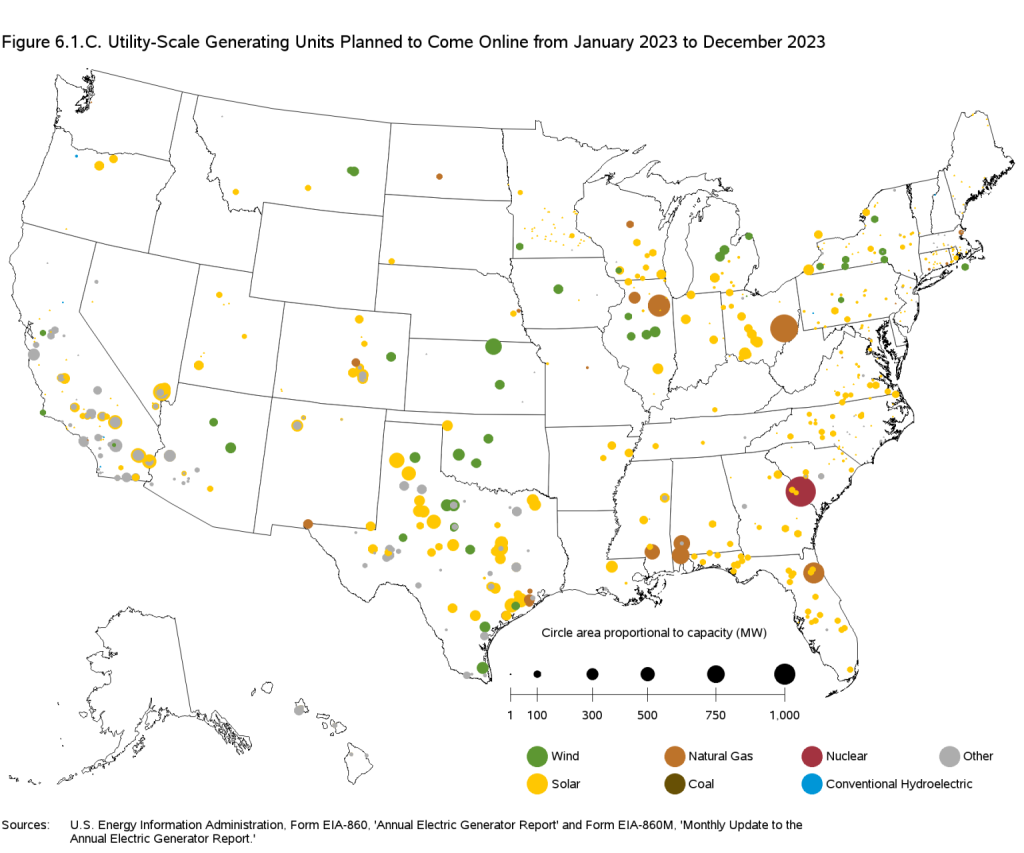Just as the climate tax credits start cranking, GOP prepares for a redo
House Republicans are using one threatened calamity to mess with another threatened calamity by preparing to strip out major tax credits that fight climate change as part of their federal debt limit proposal.

Hey gang! I’ve gotten a few questions about how I dredge up these stories. Basically, I watch a couple dozen news sources and keep an eye open for scientific studies. Once you know where to look, and what to look for, things start popping up, I’ve found. Then you gotta read it all. And so that’s where the value for you comes in: I read stuff so you don’t have to!
So, with that in mind, if there’s things you’d like me to follow or pay more attention to, please drop me a note at mike@heatrising.net
Thanks for reading!
1. GOP prepares to cut nose off face just to spite climate change spending – again
House Republicans are using one threatened calamity to mess with another threatened calamity by preparing to strip out major tax credits that fight climate change as part of their federal debt limit proposal. The craziest thing is: majority-Republican states are benefiting from the very climate change-fighting tax credits the House GOP wants to eliminate. The plan would strip out new emissions credits for nuclear energy, renewable energy manufacturing, domestic sourcing of electric vehicle components, hydrogen production and extensions of the wind and solar production credits from the Inflation Reduction Act. Basically, everything that’s driving major economic change – especially in red states.
- Republican Speaker Kevin McCarthy needs 218 votes among his 222 vote majority and reportedly is far short of the total because numerous GOP members want to protect big solar, wind, and ethanol projects in their states.
- A study by Bloomberg shows states that voted for Trump would benefit from the tax credits far more than others. For instance, Wyoming would see $39,192 per capita of green investment and Texas would likely receive $67 billion of green investments.
2. The struggle over solar in sunny Puerto Rico
The electrical grid in Puerto Rico is a mess. It was severely crippled in 2017’s Hurricane Maria (remember Trump throwing paper towels?) and was wrecked again by Irma later that year, and then by Fiona in 2022. As an island in a sunny place with lots of small villages, Puerto Rico seems like a perfect candidate for distributed solar power, but with 3.36 million people, it could cost as much as $25 billion to get PV installed on every roof. Nonetheless, PR has pledged to be 40% renewable by 2024. Those goals have gone crosswise with the Federal Emergency Management Administration’s plan to spend $18 billion in rebuilding funds on two fossil fuel power plants. Earlier this month, a group of local PR organizations sued, claiming FEMA’s plan violates the National Environmental Policy Act and that the money should be spent on solar instead.
- Meanwhile, the U.S. Department of Energy has $1 billion of its own rebuilding funds, and is seeking local ideas on how to spend it on power generation.
- DOE has pledged another $3 billion to Sunnova Energy to subsidize borrowing costs for low income people in Puerto Rico that want to install rooftop PV.
Sources: PV Magazine / Washington Post
3. Scientists worry this year’s El Nino heat won’t dissipate, speeding climate change
Every seven years the Southern Pacific Ocean inexplicably warms up, mucking up global weather patterns, such as creating bigger hurricanes in South Asia but fewer in the Caribbean, more rain and snow in California, and even higher heat levels in Europe and the Middle East. Why this phenomenon, called “El Niño”, happens is still a complete mystery to climate scientists, but ocean warming already measured this year is suggesting the 2023-24 El Niño is gonna be a doozie – alarming scientists that the heat gathered by El Niño won’t go away, pushing the world over the 1.5 centigrade warming mark. The world is already at 1.2C and one climate scientist told the BBC they were “extremely worried and completely stressed."
- A new UN report projects the world will go above 1.5C within 10 years.
Sources: BBC / Reuters / KXAN-TV
4. US Supreme Court sez state courts haz climate jurisdiction
In 2017 a series of states and local governments began filing lawsuits against major oil companies, claiming the oil majors were liable for natural disaster damages due to climate change. Yesterday those lawsuits cleared a major hurdle as the U.S. Supreme Court denied a petition from ExxonMobil, Suncor Energy, and Chevron to consolidate the cases in federal court as opposed to allowing them to proceed scattered across individual state courts. State courts are considered to be much more sympathetic to plaintiffs, and forcing the oil majors to fight cases in so many venues raises the likelihood they will be found liable for damages somewhere, creating a precedent that those who drill for fossil fuels are liable for climate change. The cases have been compared to the $200 billion settlement eventually made by tobacco companies for health damages – but would likely have a much bigger price tag.
Sources: Guardian / Inside Climate News
Other Things Happened
Wildfires are so bad in Colorado, fire insurance companies are bailing, so the state is creating its own insurance company for residents – just like flood-plagued Florida has, but that project is not going well. Bloomberg made a web-based graphic novel on the possible bright future for fusion energy. You might be able to harvest a bunch of lithium from old oil wells. Where VCs are making bets on green tech. This killer chart from the latest UN IPCC report outlines exactly how much carbon each climate change fighting effort would save.
Whew. You made it to the end. Good job!





